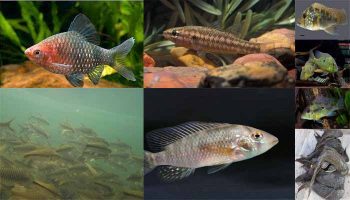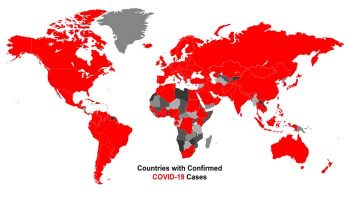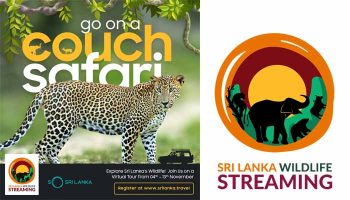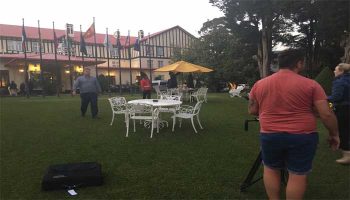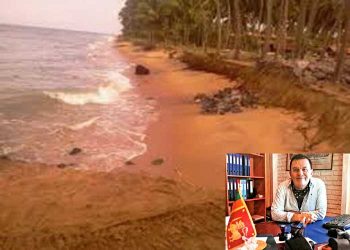Right Policy Mix for Sri Lanka Tourism Development: Leave No Stone Unturned

By
Prof. D.A.C. Suranga Silva
Kalpani V. Gamage and Manori L. Guruge
Sri Lanka Tourism: A “External Economic Stressbuster”
Sri Lanka Tourism has evidently displaced its great contribution for the economic growth and development of the country as being one of most successful industries during the post-war economy of Sri Lanka. Its direct and indirect, even induced, contribution with its strong backward-forward linkages have been a major reason for such impressive performance of the industry.
During past decade, from 2009 to 2018, tourist arrivals increased by nearly 475% while foreign exchange earnings of tourism increased by nearly 1150%. On the similarly, level of direct and indirect employment (total employment) increased by nearly 200% while formal accommodation capacity increased by approximately 70%
(Silva Suranga, https://www.ceylondigest.com/people-centric-sustainable-tourism-development-and-entrepreneurial-new-public-service-in-sri-lanka/, 2020). As a result of this impressive performance, Sri Lanka Tourism has now become the 3rd Highest Foreign Exchange Earner of the country becoming a “Economic Resilient Builder” or a “External Stressbuster” against the detrimental impact of the current burning deficit of the Trade Account in the Balance of Payment of the country.


With the accolades given by the Leading global travel indicators and various travel magazines, including Lonely Planet and National Geographic Traveler etc, Sri Lanka has been recognized as the Best Destination or One of the Best Tourist Destinations in the world. Tourist attractions in Sri Lanka have been fascinated in “So Much in So Little”, includingUNESCO heritage sites, sandy beaches, attractive wildlife parks and hill country sceneries, as an island of its size – undoubtedly one of the best tourist destinations in the world of its entire size. The astonishing wildlife attractions (such as the world’s highest elephant gathering at Minneriya national park), thousand-year old Buddhist monuments representing one of the highest numbers of the UNESCO World Heritages in the region, hiking, train travels through the Hill Country’s tea plantations, Enjoyable tropical glamorous beaches including Sun bathing, Surfing, Corel watching, Diving, preserved unique Sri Lankan identity, Colonial Heritance and Legacies, Authentic Sri Lankan Cuisine and much more provide tourists with “Unforgettable Travel Experiences” alone with the mesmeric socio-cultural diversity and warm friendliness of people of Sri Lanka.

Travel & Tourism Competitiveness index (TTCI)
Increasing the Travel & Tourism Competitiveness (TTC) over the other destinations has been considered as a fundamental strategy to increase the attractiveness of a country – Higher the competitiveness of a tourist destination is, the Greater attractiveness of tourists to such destination.
Consequently, the industry could generate higher tourism receipts, employment opportunities and other possible positive socio-economic impact to the economic growth and development of the country. The Global Travel and Tourism Competitiveness Index (TTCI) provides a set of factors and policies which empower the sustainable development of the Travel and tourism sector, which consequently lead for the development and competitiveness of tourism industry of a country.
The Travel and Tourism Competitiveness Index (TTCI) measures the tourism competitiveness among 140 countries of the world considering of 4 Sub-Indexes, 14 Pillars and 90 Individual Indicators distributed among these 14 Pillars, analyzes the factors that enable the sustainable development of both travel and tourism, in term of contributing to higher standards of tourism development of a country. The TTCI considers Four (4) Main Components: (1) Enabling Environment, (2) Travel Tourism Policy and Enabling Conditions (3) Infrastructures and (4) Natural and Cultural Resources. The TTCI highlights the strong and weak areas of the destination country in order to enhance the competitiveness of tourism industry.
Components of Travel and Tourism Competitiveness Index

According to the TTCI 2019 (http://www3.weforum.org/docs/WEF_TTCR_2019.pdf), Spain is the first in this ranking of TTCI-2019 as the best competitive country, followed by France, Germany, Japan, the United States, the United Kingdom, Australia, Italy, Canada and Switzerland (http://www3.weforum.org/docs/WEF_TTCR_2019.pdf /).

In regional wise, Asia-Pacific is the second most competitive region only behind the Europe and Eurasia. In the Asia – Pacific region, several countries like Japan, Australia, China, Singapore, Malaysia, New Zealand, Thailand, India have been able to show their high competitiveness rather than most of the destination countries in the region. Previous year, Sri Lanka was ranked as the 77th out of 140 countries. This rank was reduced by 13 ranking positions from the last survey in 2017 (64th place in 2017).

Relative Competitiveness of “So-Sri Lanka”
One of the major factors determining the growth of Sri Lanka Tourism is the relative competitiveness over the other competitive destination countries in the region.
Recently, Sri Lanka Tourism has shown a slow progress in its performance in increasing its competitiveness with the other tourist destinations in the region. This is obviously visible when Asia Pacific Region has become the Second Most Competitive Region in global tourism.
Furthermore, India and Bangladesh have become one of the fastest growing competitive destination countries in global tourism when considering the recent performance of its overall TTCI scores. Bangladesh has moved up Five Places to the TTCI Ranking byobtainingthe 120th place at TTCI-2019. Similarly, India has moved up Six Places to the TTCI Ranking by obtaining 34th place at TTCI-2019.
Several factors have caused to decrease the level of Travel and Tourism Competitiveness of Sri Lanka Tourism from 2017 to 2019.
Among these factors, decrease the level of Competitiveness in Business Environment (50th to 79th), Safety and Security (59th to 78th), International Openness (67th to 100th), Price Competitiveness (20th to 74th) and Natural Resources (31st to 43rd) have been the major reasons for such a decrease by 13th ranking positions in Global Travel and Tourism Competitiveness Index.
- Declining Price Competitiveness of Sri Lanka Tourism: In particular, an increase the requirements to obtain Sri Lankan visa (16th to 50th), increase the taxes for air tickets and airport chargers (45th to 132nd), higher prices of hotels (compare to the destinations in the region), higher Fuel price levels were major reasons to reduce the Price Competitiveness of Sri Lanka Tourism.
These indicators are further aggravated when considering average cost for Hotel Construction (by different graded hotels).

- Though the competitiveness of Sri Lanka Tourism is higher than Vietnam and Nepal, it is far below than the travel and tourism competitiveness of India, Singapore, Thailand and Malaysia. However, Sri Lanka`s Safety & Security, Human Resource & Labour Market, Environment Sustainability and Tourist Service Infrastructure are relatively better than India and few other competitive countries in the region.

- Decreasing Quality of the Infrastructure: Poor Conditions of the roads and railroads and lack of accessibility of destination sites have reduced the Quality of the Infrastructurein the TTCI.
- Declining the TTCI’s Value of Natural Resources in Sri Lanka Tourism: The major reasons to reduce the TTCI Ranking of Natural Resources in Sri Lanka Tourism (39th to 112th) were lower the Percentage of Total Protected Areas, Reducing the advantage of natural assets, Less no of Number of World Heritage Natural Sites, Poor Knowledge of Total Known Species, and Less Development of Natural Tourism Digital Demand.

Furthermore, the competitiveness of Sri Lanka Tourism can be summarized into Five Levels of Success at the Global Travel and Tourism Competitiveness Index. In this context, Sri Lanka Tourism is neither representing the lowest performance of TTCI nor at the highest Performance of TTCI.
Higher National Prioritization of Travel and Tourism Development, Ground & Port Infrastructure Facilities and Natural Resource Attractions are the three major categories creating higher overall values of Sri Lanka Tourism in the Travel and Tourism Competitive Index at present.
Therefore, Sri Lanka Tourism must focus on several areas to enhance its competitiveness:
- Business Environment: Lower value of Global Ease of Doing Business Index is also indicating the negative setting of business environment of the country. Mainly, Lack of property rights and High taxes are two key factors behind such dismal business environment. In addition, the indicators of Ease of Doing Business can be highlighted in this context. Such under performance and inefficiencies have created in Sri Lanka due to: (1) Difficulties of Getting Electricity for Business operation, (2) Inefficiencies of Registering Property, (3) Difficulties of Getting Credits, (4) Complication of Paying Tax and (5) Problems of Enforcing contracts are several reasons for keeping Sri Lanka at 99th Position of Ease of Doing Business Index (Silva Suranga, 2020).
- Safety and Security: Even though Sri Lanka has a moderate performance on it, the competitiveness of Sri Lanka Tourism has decreased over the last few years due to the several incidents of attacks on tourists and the sexual assault of women travelers.
This score can be further decreased due to the impact of Easter Sunday attack. Currently, there are growing number of Solitary Travelers and many of them are Women Solitary Travelers.

This market segment would be a niche market segment with great potential for Sri Lanka Tourism. Ensuring the security of women must be a main concern for tourism promotion in Sri Lanka.
- International Openness and Price Competitiveness: This is one of most detrimental factors to create less competitiveness in Sri Lanka Tourism. Although the Price Competitiveness of Sri Lanka Tourism is relatively at a satisfactory level of the global Travel Tourism Competitiveness, it is highly detrimental when considering the price competitiveness of regional destinations, more specifically at the competitive destinations of Sri Lanka Tourism in the region (India, Thailand, Malaysia, Indonesia, Vietnam).
- Poorattention on Environment Sustainability and Natural Resources can impede the attraction of international travelers and their memorable experience. At present tourists, more specifically, Millennials and Generation Z are seeking opportunities to escape form the hectic city life in “Concrete Jungle”. They greatly value the attraction of natural environment due to the therapeutic capacity of natural environment to restore their inner peace.
Sri Lanka has a great potential to attract such tourist flows. Policymakers and practitioners should focus to ensure the sustainability of natural environment. Thailand can be a role model for Sri Lanka as it has higher ranking values of Environment Sustainability and Natural Resources in its travel and tourism competitiveness index. Furthermore, Thailand has stop tourist arrivals to the famous Maya Beach due to overtourism. Thailand has banned the usage of single use plastic bags as well. Government of Thailand has amended its consumption laws in order to help to increase forest cover targeting to increase forest cover from 31.6% to 55% by 2037.
- Improvement of infrastructure and tourist service facilities: Countries like Spain, Thailand, Vietnam and India are continuously making a huge investment to improve the tourist infrastructure and basic service facilities. Recently Vietnam has funded heavily on developing on infrastructure facilities in respect of transport, energy, water supply, drainage and information and communications to ensure convenient, quality and modern service to the tourists. In India, augmentation of quality tourism infrastructure throughout the country is a key area of functioning of the Ministry of Tourism. More than fifty percent of the Ministry’s expenditure on Plan schemes is incurred for development of quality tourism infrastructure at various tourist destinations and circuits in the States/Union Territories.

Public and private partnership has to be strongly emphasized for tourism infrastructure investments as it can leverage an “Exponential Growth” in tourism development. With this Public-Private Partnership, India is to reintroduce Ramayana Circuit Tours connected to the Story of Lord Rama by developing the road and other kinds of accessibility of these circuit tours.
Sri Lanka should develop of both physical and digital infrastructure facilities to increase its travel and tourism competitiveness.
Outcome-Driven Policy-Measures and Result-Based Development Strategies
Policy-Measures and Development Strategies taken by different destination countries to increase their travel and tourism competitiveness can be highlighted as global best practices learnable to Sri Lanka Tourism to enhance its competitiveness at global and regional levels.

Entering the Fundamental Correction: Stopping the Beginning of “Rip-off Sri Lanka”
The National Policy Framework (NPF) of new government constitutes of Ten (10) Key Policies aiming to achieve the Fourfold Outcome: (1) A Productive Citizenry, (2) A Contented Family, (3) A Disciplined and Just Society and (4) A Prosperous Nation.
Under this National Policy Framework and the Sectoral Policies and Policy Components of Tourism Development clearly indicate that its main purpose is to develop Sri Lanka Tourism as an Environmental and Domestic-Culture Friendly Industry with Extensive People’s Participation, targeting to attract 7 million tourist arrivals by generating 10 US $ billion income to the nation.
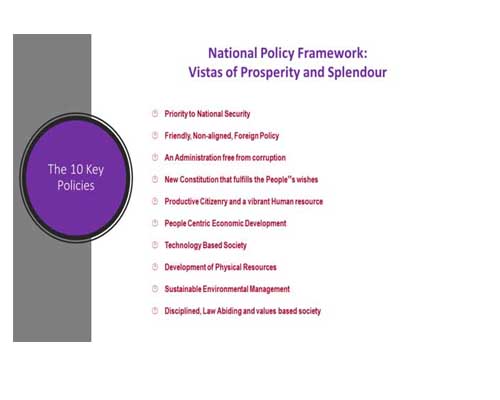
To achieve such national targets, the Proposed Sectoral Policies & Policy Components with Relevant Strategies for Tourism Development under the National Policy Framework should be connected with the Major Pillars of Global Travel and Tourism Competitiveness Index:
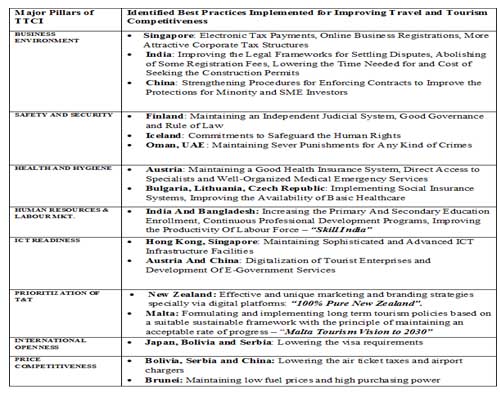
Right-Policy Mix Towards Global Heights
Innovative creation and efficient delivering of unique and authentic tourism experiences to the tourists can mainly determine whether Sri Lanka Tourism reaches a higher level of competitiveness as a growing top tourist destination country in the world.
Instead of Over-Promising and Under-Producing, Sri Lanka Tourism must produce more and better-quality tourism services to meet current trends and patterns of travel and tourism demand. Tourists are now Discerning Customers. They areasking more “Distinctive” and “Heterogenous” nature and culture-based tourist attractions and services. Understanding the great variety of tourist sensitivities over the prices of tourism products and services is essential to create an effective marketing of Sri Lanka Tourism. If Sri Lanka Tourism provides only ordinary or sameness products and services, then such tourism demand must be highly price sensitive. The opposite can be realized if Sri Lanka Tourism can produce unique and memorable travel experiences for tourists. Therefore, focusing on high quality experience-based tourism products and services is decisive for making Sri Lanka Tourism to be competitive and to create a greater ability to consistently generate more tourism revenues to the country.
Sri Lanka Tourism must find a most suitable combination of the “RIGHT-POLICY MIX” in both assets and process of tourism development. The tourism assets are the tourism resources created by the nature and culture and also the man-made attractions & facilities made by Sri Lankan (e.g. infrastructures, marketing etc.).
All in all, Sri Lanka Tourism must retain its competitive position by satisfying the expectations of tourists and all other stakeholders of the industry while constantly eliminating the threats and exploiting the opportunities arising from the competitive environment in global tourism.
Thus, competitiveness of Sri Lanka Tourism can only be sustained by continuing improvement of the offerings and capabilities of the industry. Certainly, consistent marketing plans and promotional strategies through the price, quality, image, and ensuring the sustainable tourism practices must be focused through a holistic approach. Ensuring of Integrated Quality Management Process, Value-Based Promotions, Outcome-Based Training, Projects with Result-Based Management are to be taken into consideration to increase the Travel and Tourism Competitiveness of Sri Lanka Tourism.
Finally, the success of all these endevours to create a higher competitiveness of Sri Lanka Tourism are mainly determined by Proficient Management, Knowledgeable Workforce, Innovative Entrepreneurship, Robust Marketing, Supper Technologies and Responsible Leadership.


